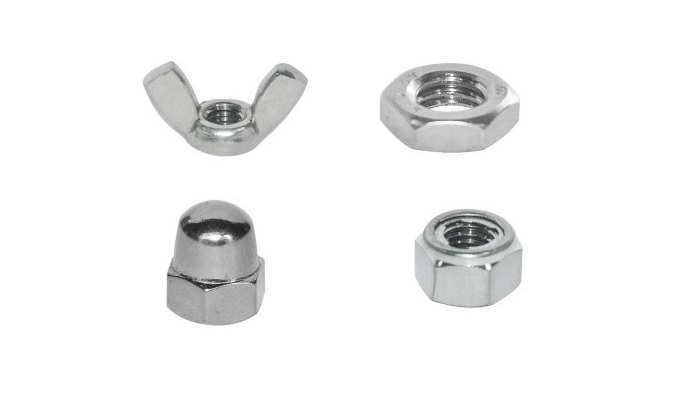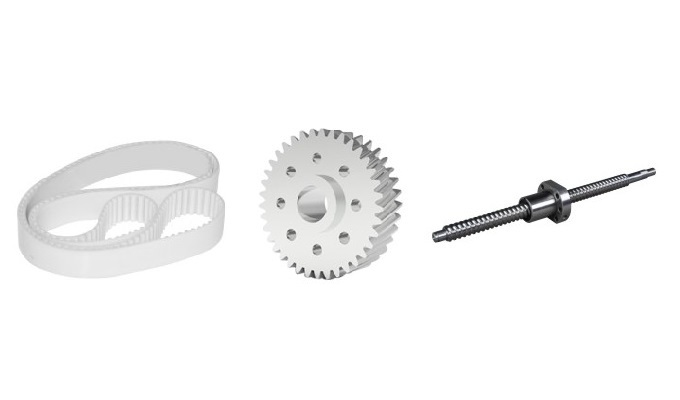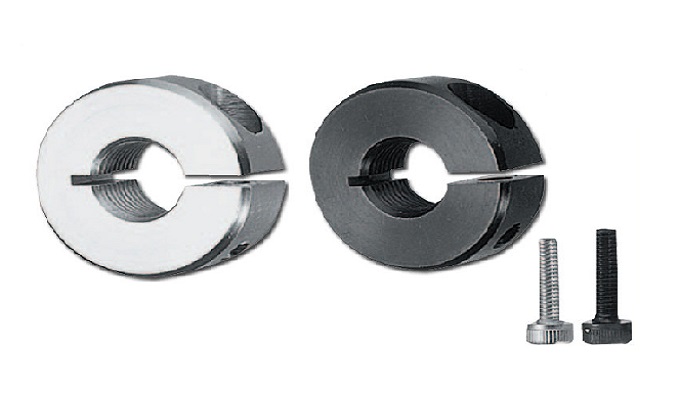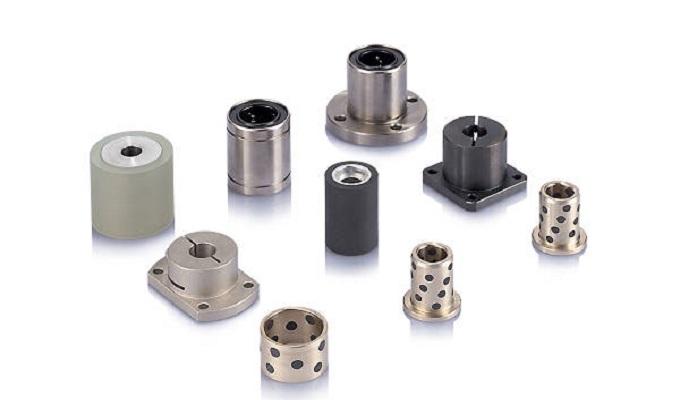Washers are commonly used small components in mechanical connections, typically flat metal rings. Their main function is to provide cushioning, isolation, and sealing between two fastened objects to ensure the stability and reliability of fasteners.In daily life, we often encounter various types of washers, including flat washers, spring washers, locking washers, retaining washers, etc. Each type can be further classified based on their shapes.
This article compiles 14 types of washers. Let's take a look!
Standard Spring Washer
The standard spring washer is the most widely used type in the market. It is commonly referred to as a spring washer in the bolt industry. These washers find extensive application in both load-bearing and non-load-bearing structures of general mechanical products. They are known for being cost-effective, easy to install, and suitable for frequently assembled/disassembled parts.
Material options include stainless steel and carbon steel, with common specifications such as M3, M4, M5, M6, M8, M10, M12, M14, M16. The national standard GB/T 94.1-87 specifies the technical conditions for standard spring washers with sizes ranging from 2-48mm.
Standard Spring Washer
Saddle-Shaped Spring Washer
The saddle-shaped spring washer, resembling a horseshoe, is primarily used to prevent loosening of bolts. Its unique structure increases friction, preventing fasteners from coming loose. It shares the anti-loosening functionality with other wave spring washers and stainless steel spring washers.
Wave Spring Washer
The wave spring washer, a common mechanical sealing component, is typically made of metal with a wavy shape. Its excellent elasticity and sealing performance allow it to deform under stress, returning to its original state to maintain tight contact. This makes it suitable for various static and dynamic sealing applications.

Wave Spring Washer
Flat Washer
Also known as a plain washer, the flat washer is the most commonly used type. It is typically round, though square washers can also be used as needed for assembly. Flat washers serve to increase the contact area, improving the load distribution on connected components and protecting their surfaces. Specific variations include flat washer-C class, large washer-A and C class, extra-large washer-C class, small washer-A class, flat washer-A class, flat washer-chamfered-A class, square washer, etc.
Flat Washer
Saddle-Shaped Elastic Washer
The saddle-shaped elastic washer, also known as a saddle washer, is commonly used in applications requiring anti-loosening. When used in conjunction with bolts, it prevents loosening by providing additional force to the nut after tightening, increasing the friction between the nut and bolt.
Wave Elastic Washer
The wave elastic washer, also known as a wave washer or double wave washer, is a common mechanical sealing component made of metal with a wavy shape. Its elastic deformation provides anti-loosening capabilities, with a relatively small spring force that evenly distributes stress, avoiding damage to connected surfaces.

Wave Elastic Washer
Internal Tooth Lock Washer
The internal tooth lock washer is a common fastening component widely used in mechanical equipment. Its internal gear structure allows for the fastening and securing of parts, achieved through the interplay of locking and unlocking steps. During normal operation, the internal tooth lock washer maintains a tightened state, preventing loosening and thread sliding, ensuring the normal operation of mechanical equipment.
External Tooth Lock Washer
The external tooth lock washer is commonly used in mechanical component connections, with a working principle similar to the internal tooth lock washer. It prevents loosening of threaded connections by relying on the engagement force between the tooth tips and the flat surface of the connected component. External tooth lock washers are typically made of high-strength materials such as stainless steel, aluminum alloy, or copper alloy, offering good mechanical and corrosion resistance properties.

Internal/External Tooth Lock Washer
Internal Serrated Lock Washer
As the name suggests, the internal serrated lock washer features serrations on the inside, commonly used for connecting fasteners and other components. Its special design allows it to provide higher locking force when subjected to vibration or external forces.
External Serrated Lock Washer
The external serrated lock washer is used for small parts to provide spring action. Its dimensions are similar to those of self-tapping screws used with three-dimensional stamped parts. The serrated washer is mainly used for anti-loosening in parts where the bolt head or nut is locked down, presenting as a standalone circular washer with staggered openings.
I-Beam Steel Angle Washer
The I-beam steel angle washer is a mechanical component used for connecting I-beam steel. It typically consists of a set of square angle washers and nuts. I-beam steel is a commonly used building material, widely employed in various construction structures. To ensure the safety and stability of I-beam steel, angle washers are introduced as crucial connecting elements. Standard specifications guide the use of angle washers, playing a significant role in ensuring the quality and reliability of I-beam steel structures.

I-beam Steel Angle Washer
Single Ear Retaining Washer
The single ear retaining washer is a common mechanical sealing device designed to prevent leakage of liquids or gases while providing axial and radial fixed support. Comprising an inner ring, outer ring, and a single-side ear, it clamps onto the shaft with a specific radial gap, allowing lubricating oil or sealing medium to enter during operation, serving both lubrication and sealing purposes.
Double Ear Retaining Washer
The double ear retaining washer, also known as a double ear snap ring, is a metal circular ring often made of spring steel or stainless steel. Based on its structural characteristics, the double ear retaining washer can be divided into internal ear and external ear types. As a commonly used component in mechanical equipment, its primary function is to prevent axial displacement of bearings during operation.

Retaining Washer
Circular Nut Retaining Washer
The circular nut retaining washer, also known as a retaining washer, is a washer designed to prevent circular nuts from loosening. It achieves this by utilizing the cooperation of retaining ears, the circular nut opening, and the keyway on the shaft. Typically used in conjunction with circular nuts, it finds widespread applications in electrical appliances, elevators, and mechanical assemblies, effectively fixing rolling bearings to prevent loosening.

Circular Nut Rtaining Washer
In summary, these are common types of washers frequently used in the market, each offering specific performance advantages suited for particular applications. When selecting washers, it is essential to consider specific requirements, usage scenarios, and performance criteria to determine the most suitable washer type.







